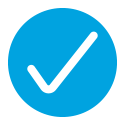Guidelines for SAIT staff on proper punctuation use.
Jump to section
Only abbreviate job titles, such as Vice President, for a photo caption or headline.
![]() VP Sam Crenshaw unveiled the plaque.
VP Sam Crenshaw unveiled the plaque.
Board of Governors should be written out in full for the first reference and abbreviated to the board for subsequent uses. Do not abbreviate to BOG.
Abbreviate Jan., Feb., Aug., Sept., Oct., Nov. and Dec. when used with a specific day.
![]() Monday, Aug. 3.
Monday, Aug. 3.![]() Monday, August 3rd
Monday, August 3rd
Do not abbreviate March, April, May, June or July. Months should be spelled out when used with a year.
![]() August 2018
August 2018![]() Aug. 2025
Aug. 2025
Provincial and territorial names are spelled out in full when they stand alone. When they appear with a city or community name, abbreviate following Canada Post style: AB, BC, MN, NB, NL, NS, NT, NU, ON, PE, QC, SK and YT.
![]() Yellowknife, YT
Yellowknife, YT
When abbreviating the United States and the United Kingdom, include periods. However, references to currency do not require periods. If no country is specified, Canadian dollars are assumed, and CDN is not necessary.
![]() U.K. and U.S.
U.K. and U.S. ![]() $100 US
$100 US
Spell out acronyms on first reference, followed by the acronym (without periods) in brackets.
![]() School for Advanced Digital Technology (SADT).
School for Advanced Digital Technology (SADT).
In general, avoid introducing unfamiliar acronyms if they are to be used only once or twice. When in doubt, spell out the whole name.
There are some well-known acronyms that require no introduction, such as NASA, CBC, RCMP, MP, MLA, or NATO.
The ampersand (&) should be used only when available characters are limited. Otherwise, spell out “and.”
In print, the ampersand should not be used in place of the word “and.”
On the web, ampersands may be used in headlines only when necessary.
Other exceptions are marketing materials and social media, where ampersands can make headlines shorter and enhance visual appeal, in tables or for companies that use an ampersand in their names, such as Abercrombie & Fitch.
Unless one is required for clarity, do not use a comma in front of these words when part of a list:
- and
- but
- because
- or
- nor
- for
- yet
- so.
![]() The students were required to submit two research papers, complete three projects and write two exams.
The students were required to submit two research papers, complete three projects and write two exams.
An ellipsis may be used to indicate an omission from text or a quotation. Use three periods, with a space before and after each period ( … ) to indicate the omission. If the ellipsis is used at the end of a sentence, include a fourth period ( …. ).
Use em dashes with a space before and after to set off clauses within sentences, not single (-) or double (--) hyphens.
![]() The students — as energetic and full of enthusiasm as they were — did not relish the idea of writing an extra essay for the class.
The students — as energetic and full of enthusiasm as they were — did not relish the idea of writing an extra essay for the class.
To make an em dash on a PC, hold down ctrl+alt+ the minus sign on your number keypad at the same time. For Macs, hold down shift+option+ the minus sign key.
Use en dashes with a space before and after to show duration or range.
![]() 9 am – 5 pm
9 am – 5 pm
![]() March 15 – 31
March 15 – 31
![]() 2006 – 2009
2006 – 2009
An exception is the academic year.
![]() The 2018/19 academic year.
The 2018/19 academic year.
To make an en dash, type two hyphens followed by a space.
Avoid using exclamation marks in almost all cases. Use sparingly and only to indicate surprise, a command, deep emotion, strong emphasis or sarcasm.
When two or more words serve together as a single modifier before a noun, use a hyphen to form the modifying words clearly into a unity.
![]() a first-year student
a first-year student
![]() the two-day conference
the two-day conference![]() well-known actor
well-known actor
![]() out-of-date statistics.
out-of-date statistics.
When the same compound adjectives follow the noun, hyphens are not needed.
![]() a student in their first year of studies
a student in their first year of studies![]() the conference will last for two days
the conference will last for two days
![]() the actor is well known
the actor is well known![]() the statistics are out of date.
the statistics are out of date.
Adverbs ending in “ly” are not followed by a hyphen because the “ly” indicates the word that follows is modified.
![]() a highly skilled athlete
a highly skilled athlete![]() a brightly lit room.
a brightly lit room.
Other times to use hyphens:
- to avoid awkward combinations of letters
 co-star
co-star  costar
costar co-worker
co-worker  coworker
coworker co-op
co-op  coop (unless you mean a chicken coop)
coop (unless you mean a chicken coop) - to join two or more words together to form an adjective
 the one-of-a-kind jacket
the one-of-a-kind jacket - when fractions are written out in full
 two-thirds
two-thirds - when a unit of measurement is used as a descriptor with a number value
 370-kilometre limit
370-kilometre limit three-year-old child
three-year-old child - with the prefixes/suffixes
 ex-, self-, all-, post-, -based and -elect
ex-, self-, all-, post-, -based and -elect - when full-time and part-time precede a noun, otherwise two words.
 She is a full-time student.
She is a full-time student. She goes to school full time.
She goes to school full time.
Use double quotation marks to enclose all direct quotations.
![]() “I don’t want to go to the drive-in movie if it’s raining,” says Joey Lawrence.
“I don’t want to go to the drive-in movie if it’s raining,” says Joey Lawrence.
Use single quotation marks for a quote within a quote.
Capitalize the first word of any mid-sentence quote that constitutes a complete sentence of its own.
![]() “He told me, ‘A good education comes from more than just books.’ And I agree with that,” says Bob Loblaw.
“He told me, ‘A good education comes from more than just books.’ And I agree with that,” says Bob Loblaw.
But leave the first word in lowercase if the quote is not a complete sentence of its own.
![]() “Students tell me that a positive campus experience ‘helps define any academic journey,’” says Jane Smith.
“Students tell me that a positive campus experience ‘helps define any academic journey,’” says Jane Smith.
Use quotation marks to imply the opposite meaning of a single word within a sentence.
![]() There is a lot of “educational” value in spending an afternoon at the Gateway.
There is a lot of “educational” value in spending an afternoon at the Gateway.
Always place punctuation marks inside quotation marks:
![]() “I am not a crook,” says Richard Nixon.
“I am not a crook,” says Richard Nixon.![]() “When does the semester start?” asked the student.
“When does the semester start?” asked the student.
If a quotation from a single speaker is longer than one paragraph, use quotation marks at the beginning of each paragraph but at the end of the last paragraph only.
![]() “This cut of beef meets the highest standards of excellence,” says Pauper. “It’s fitting to have it on the menu for this celebration.
“This cut of beef meets the highest standards of excellence,” says Pauper. “It’s fitting to have it on the menu for this celebration.![]() “We are delighted our chef has offered her expertise in beef preparation for this important dinner.”
“We are delighted our chef has offered her expertise in beef preparation for this important dinner.”
Semicolons should be avoided in web copy — use an em dash instead.
To make an em dash on a PC, hold down ctrl+alt+ the minus sign on your number keypad at the same time. For Macs, hold down shift+option+ the minus sign key.
In print, semicolons may be used to join two complete sentences containing closely related ideas. The first word after the semicolon is not capitalized.
![]() The convocation deadline is May 12; students must inform the Office of the Registrar of their intention to attend by this date.
The convocation deadline is May 12; students must inform the Office of the Registrar of their intention to attend by this date.
Semicolons are used to separate three or more items in detailed lists containing commas or numbers within each item.
![]() Attendees included Zoe French, Manager, Business Operations; Tracy Samuel, Content Control Specialist, Business Operations; and Frasier Ranch, Water Surveyor, Business Operations.
Attendees included Zoe French, Manager, Business Operations; Tracy Samuel, Content Control Specialist, Business Operations; and Frasier Ranch, Water Surveyor, Business Operations.

Oki, Âba wathtech, Danit'ada, Tawnshi, Hello.
SAIT is located on the traditional territories of the Niitsitapi (Blackfoot) and the people of Treaty 7 which includes the Siksika, the Piikani, the Kainai, the Tsuut’ina and the Îyârhe Nakoda of Bearspaw, Chiniki and Goodstoney.
We are situated in an area the Blackfoot tribes traditionally called Moh’kinsstis, where the Bow River meets the Elbow River. We now call it the city of Calgary, which is also home to the Métis Nation of Alberta.